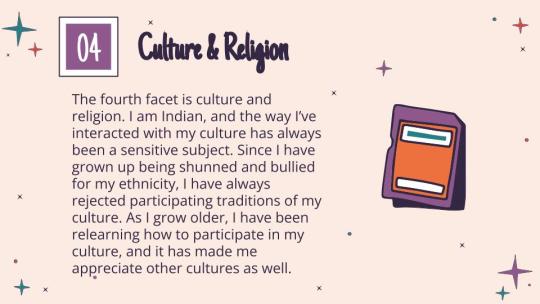#PhotoVoice
Explore tagged Tumblr posts
Text
Research Study-Seeking Participants
Participants needed for my Photovoice Study
Hello all, I mentioned to you that I was working on my doctorate program a few years back. This is the last step that I need to complete and thought this was a great way to try and find participants: 📢 Calling all LGBTQ+ Latinx students in Los Angeles and Orange County communitycolleges! 🌈 Are you passionate about sharing your unique experiences? Join myphotovoice study hosted on Zoom and let…

View On WordPress
2 notes
·
View notes
Text
#TalkingPhotos#PhotoStory#PhotoVoice#StorytellingPhotos#PhotoNarrative#PhotoJournalism#PhotoDiary#PhotoStories#PhotoTalk#PhotoMemories#PhotoJourney#PhotoTales#PhotoChronicles#PhotoNarratives#PhotoDocumentary#PhotoEssay#PhotoStorytelling#PhotoJournal#PhotoNarration#PhotoExperience#PhotoAdventure
0 notes
Note
re my rb of that essay post from u (since ofc u see that in activity)… here r the sources i think. maybe. they would interest u..? not exactly ur field of study but close enough i think…. the 2015 study especially so fascinating + perfect for the novel i was discussing i was so excited writing the paper
Holtby, A., Klein, K., Cook, K., & Travers, R. (2015). To be seen or not to be seen: Photovoice, queer and trans youth, and the dilemma of representation. Action Research, 13(4), 317-335. https://journals.sagepub.com/doi/pdf/10.1177/1476750314566414
Kuppers, Petra. Scar of Visibility : Medical Performances and Contemporary Art, University of Minnesota Press, 2007.
This is so funny because I read the first paper for one of my performance studies papers back in the day and the book is actually on one of my tbr lists for my phd proposal dbdidbfjfof humanities students trying to study anything about marginalization will always run into the same texts 😭
#asks#lili🎁#i am glad to have a rec for the book that means i’m not gonna read it and realize it’s a complete bust
2 notes
·
View notes
Text
Week 6: Read - Understand PhotoVoice
What is Photovoice?
Photovoice is a creative way for underprivileged communities to use photography or video to share their experiences and advocate for change. It helps people facing challenges like poverty or discrimination tell their stories and influence decisions that affect their lives.
Key Points that will help me to understand this:
Definition: Photo-voice allows people with limited power to document and share their experiences through photos or videos to change public perceptions and policies.
Goals:
Give a voice to those who are often unheard.
Encourage critical thinking about their situations.
Promote positive change through influencing policies.
Benefits:
Quick results that are easy for anyone to use.
Photography empowers participants and changes how others see their environment.
Who Uses It: Photo-voice has been used by marginalised groups such as youth, the homeless, people with disabilities, and racial minorities. It’s also used in schools, health centers, and advocacy organisations.
Steps for Planning and Running a Photovoice Project:
Project Planning with Participants:
Include participants, staff, volunteers, and a facilitator in the planning process.
Ideally, recruit participants first for effective planning.
Consider involving community leaders or policy makers, but weigh the pros and cons.
Training for Participants and Staff:
Participants need training in photography and safe, ethical practices.
Group-building exercises help participants work well together.
Staff should understand the project’s goals and support participants without doing the work for them.
Photography Process:
Practice is essential for learning photography.
Choose equipment (disposable vs. digital) based on budget and project length.
Hold regular group discussions for participants to reflect on and improve their work.
Photo Selection and Captioning:
Participants choose impactful photos for exhibitions or advocacy, guided by group feedback.
Captions explain the intent and context of each photo.
Exhibition:
Showcasing photos raises public awareness about the issues.
Invite media and community leaders, and allow participants to stay anonymous if they wish.
Taking Action:
After the exhibition, participants may take further actions such as advocacy or media campaigns to address the issues highlighted in their photos.
Follow-Up and Evaluation:
Provide ongoing support to participants and follow up on action plans for lasting change.
Involve participants in evaluating the project to improve future efforts.
I found this article really interesting! I used to think that making an impact just meant taking photos and displaying them, but it turns out there’s so much more we can do. I hope to make a difference someday! :)
“Section 20. Implementing Photovoice in Your Community.” Chapter 3. Assessing Community Needs and Resources | Section 20. Implementing Photovoice in Your Community | Main Section | Community Tool Box. Accessed October 15, 2024. https://ctb.ku.edu/en/table-of-contents/assessment/assessing-community-needs-and-resources/photovoice/main.
0 notes
Text
Task: Understand PhotoVoice
Note :
Photovoice is a technique that enables individuals who are disadvantaged or marginalized to use photography or video as a form of self-expression and personal growth. Participants act as participatory action researchers, documenting their conditions and challenges to facilitate community assessment and inspire policymakers to implement changes that benefit their communities.
Suggested Procedure :
When planning a Photovoice project, two crucial factors to consider are time and equipment. The photography phase can range from a couple of weeks to over a year, depending on resources and participants' situations.
Regarding equipment, financial considerations play a significant role. Disposable cameras are inexpensive but limited to around 30 photos, while low-end digital cameras, though more costly, allow for unlimited shots since images can be deleted after being downloaded. While disposable cameras encourage thoughtful shooting due to their limited capacity, digital cameras offer flexibility and are often more cost-effective for longer projects.
Additionally, affordable devices like flip-cams provide an easy way to capture and share high-definition video footage, enhancing the project's reach and impact.
Feedback Mechanism :
Depending on its resources, the organization may continue to support participants by helping them enhance the technical and personal skills they gained, which could involve career counseling, ongoing photography engagement, or assistance in obtaining scholarships or loans for education.
Moreover, following up with an action phase and implementing plans developed after the Photovoice initiative is essential for achieving lasting change and improvement in participants' lives.
0 notes
Text
Co-Producing access(ible) Knowledge: Methodological Reflections on a Community-Based Participatory Research
This paper is a methodological reflection on a community-based participatory research (CBPR) project that used the photovoice method to unravel the educational experiences of disabled college students in China’s higher education institutions. Although CBPR endeavors to nurture equitable community engagement in research processes, there are practical challenges to address the full participation of people with divergent disabilities and access needs. Drawing upon the critical disability studies literature, and particularly upon the activist scholarship of disability justice that revolves around interdependency, collective access, and cross-disability solidarity, we provide an open discussion on the complexities, tensions, and challenges of envisioning and creating access for participants with different disabilities in a visuality-centered CBPR. Our findings suggest that access creation in CBPR should go beyond the checklist style of accommodation and instead be approached as relational, dynamic, and iterative processes that require ongoing reflection, (re)learning, and negotiation among researchers and participants. We implemented nonvisual photography to adapt to the visuality-centered bias in the photovoice method. Nonvisual photography empowered participants with visual disabilities to evoke multiple sensorialities in their photo-taking, displaying, and interpretation. Moreover, the participants without visual disabilities also learned and practiced collective access and interdependency through co-transforming the CBPR into an accessible space for all. The heterogeneity among participants with divergent disabilities and access needs challenged CBPR’s envisioning of a unified community with recognized commonalities. The inclusion of participants across disability groups created an opportunity for all participants to draw meaning from the ableist social and political circumstances that forged them as a community and to develop a sense of belonging and bonding in and through CBPR. In that light, disability justice and access should be reimagined and incorporated into CBPR.
0 notes
Text
I organized a symposium on menstrual equity in B.C. In it we explore topics beyond, place-based product solutions (ie tampons and pads in public bathrooms). We look at getting high quality disposable and reusable supplies to menstruators across the province, including reservations, remote areas and prisons. We also explore pain management, menopause, education and healthcare. Check out the links for more information. The inaugural 🩸BC's Menstrual Equity Symposium - Building Inclusive Period Poverty Solutions🩸, on October 20 & 21, 2023, at @DouglasCollege in New Westminster, BC. Over the past year, British Columbia has made significant strides in advancing menstrual equity. We are thrilled to invite you to a unique opportunity to come together, exchange knowledge, and support advocacy strategies for adoption by both government and the private sector. This two-day in-person symposium will delve into period poverty reduction strategies, break menstrual stigma, and explore innovative ways of distributing menstrual supplies and education through creative jam sessions, workshops, presentations, and panel discussions. It's a space where champions of menstrual equity, representing diverse backgrounds, will unite to learn from one another and explore ways to increase access in marginalized communities. The Symposium will also incorporate creative expression, such as artwork, a photovoice photography exhibition and music to destigmatize menstruation. Community members, advocates, activists, municipal workers, business leaders, decision makers, and everyone who menstruates are warmly invited to be part of this inspiring event. @DouglasCollege @FreePeriodsCanada Let's #EndPeriodPoverty together! 🩸 #BCMenstrualEquitySymposium #UnitedWayBC #MenstrualCycleResearchGroup#DouglasCollege
1 note
·
View note
Text
How Photovoice Can Change the World: A Guide to Visual Storytelling for Social Change https://link.medium.com/HXIvkbbpvGb #photography #story #blog
0 notes
Text

Photovoice: Every Picture Tells a Story
Introduction
Communities and populations most in need of supportive change often face the most significant challenges of having their voices heard and their needs understood. Photovoice is a participatory research method that enables them to document and share the realities of their lived experiences with policymakers.
What is Photovoice?
Photovoice equips people who need to be heard with cameras to record and share the aspects of their environments and experiences that policymakers need to understand. Using photos and/or videos as the basis for collaborative discussion, participants tell their stories in powerful, irrefutable ways, thereby claiming a voice in decisions that affect them.
Public health researchers Caroline C. Wang and Mary Ann Burris developed Photovoice in 1992 to bring the daily experiences of village women in Yunnan Province, China in front of decision-makers doing development in their region. According to Dr. Wang, the technique has roots in several approaches including:
Photo novella: a social research tool in which participants take photographs pertaining to the topic of interest and engage in reflective discussion about their significance and meaning. Documentary photography: a tool in social justice research and advocacy
Critical consciousness: an education and social concept defined by Paulo Freire as the ability to intervene in reality in order to change it Feminist theory and practice, specifically recognizing the expertise of “non-professionals”
Photovoice helps facilitate meaningful change by leveraging the inherent power of visual imagery, and by empowering community members to drive the process while policymakers and influencers become the audience. This represents a bit of role reversal from the typical research scenario. Instead of responding to questions and filling in blanks in a narrative defined by the researchers, participants articulate and share their own stories.
The fundamental process of Photovoice is straightforward. The first step is assembling a research team composed of community members, one or more mentors/facilitators, and volunteers to act as staff. The participant’s job is to document their experiences using photos and/or video to illuminate relevant issues and conditions. They curate their own images, adding titles and captions and perhaps writing or dictating narratives to accompany them. Facilitated discussions provide a safe, supportive space for participants to reflect on their images and explore and expound meaning. Presenting the outputs to policymakers gives community members a seat at the table and a voice in decisions.
Why use Photovoice?
The qualitative research toolkit is broad and varied, including a range of investigative methods and techniques. Several aspects of Photovoice make it the most powerful approach for certain applications.
“Seeing is believing”
Stories told through visual imagery can generate influence at the policy table where mere words can fall short. Policymakers are often charged with making choices that impact communities to which they do not belong. Even the most committed and responsible people are limited by their own lived experiences. Certainly, written reports and narrative testimony can be effective and useful. But those in a position to provide firsthand information and perspectives may not have the skill or facility to articulate their stories using words. Lack of education, cultural differences, language barriers – any of these factors can obstruct communication.
Read complete blog here: https://ethosapp.com/blog/photovoice-every-picture-tells-a-story
0 notes
Text
1 note
·
View note
Text
Meet Minji Cho, one of our incredible ENGin volunteers, who recently presented a groundbreaking project at the American Art Therapy Association conference! 🎤🤝
In collaboration with ENGin, Minji conducted a project on Ukrainian Teens using the powerful Photovoice method, shedding light on their unique stories and experiences during wartime. 📸🌍
What's more, Minji had the privilege of presenting her findings in front of an audience of 50 professors and mental health professionals, creating awareness and inspiring support for ENGin's noble cause. 📢🙏
A huge shoutout to the 6 courageous participants who entrusted Minji with their impactful stories. Your voices are being heard! 🗣️💪
And the story doesn't end there! Minji finally got to meet her ENGin buddy, Alice, in person, sharing a delightful evening complete with matching rubber duckies and rings! 💍🦆🤗
Join us in supporting the Ukrainian Teen Photo Voice project and ENGin's mission to make a difference! Follow and engage to be a part of something special: https://www.ukrainianteenphotovoice.org/

#engin#engin program#ukraine war#ukraine#volunteer#volunteer opportunities#eastern europe#ukranian#україна
0 notes
Text
Week 3 tutorial
Inspiration

My Work

Specific techniques and crafts
Brand design
Smith, J. C. (2006). Shibboleth Authentication Request. Login.ezproxy.aut.ac.nz. https://web-s-ebscohost-com.ezproxy.aut.ac.nz/ehost/pdfviewer/pdfviewer?vid=1&sid=ed5d83f7-b9a7-45db-af88-c8d6935867c7%40redis
Architectural photography
Rosa, J. (1998). Architectural photography and the construction of modern architecture. History of Photography, 22(2), 99–104. https://doi.org/10.1080/03087298.1998.10443865
Street art struggles
Muttaqin, M. Z. (2023). Street Art and the Struggle for Public Space. SAUC - Street Art and Urban Creativity, 9(1), 8–11. https://doi.org/10.25765/sauc.v9i1.567
Graphic Design: Fine Art or Social Science?
Frascara, J. (1988). Shibboleth Authentication Request. Login.ezproxy.aut.ac.nz. https://www-jstor-org.ezproxy.aut.ac.nz/stable/1511556?seq=4
Commercial art
Warren, F. (1910). Commercial Art Today: An Interesting Exhibition of Advertising Art. Arts & Decoration (1910-1918), 1(2), 79–79. https://www.jstor.org/stable/43799450
Key themes, ideas and conversations
Cameras for conservation: wildlife photography and emotional engagement with biodiversity and nature
Hanisch, E., Johnston, R., & Longnecker, N. (2019). Cameras for conservation: wildlife photography and emotional engagement with biodiversity and nature. Human Dimensions of Wildlife, 24(3), 267–284. https://doi.org/10.1080/10871209.2019.1600206
What ugly and beautiful photographs reveal about COVID‐19 lockdown experiences, everyday aesthetics and photography aesthetics
Vissers, N., & Wagemans, J. (2022). What ugly and beautiful photographs reveal about COVID ‐19 lockdown experiences, everyday aesthetics and photography aesthetics. British Journal of Psychology, 114(2), 352–375. https://doi.org/10.1111/bjop.12624
Regaining Quality of Life Painting Pet Portraits
Fortuna, J. K. (2023). Regaining Quality of Life Painting Pet Portraits. The Open Journal of Occupational Therapy, 11(2), 1–5. https://doi.org/10.15453/2168-6408.2185
Innovations to Photovoice: Using Smartphones & Social Media.
Foster, K. A., Davis, B., & Foell, A. (2022). Innovations to Photovoice: Using Smartphones & Social Media. Urban Affairs Review, 59(5), 107808742211002. https://doi.org/10.1177/10780874221100263
A Street Scene, Japan, (pencil and watercolour)
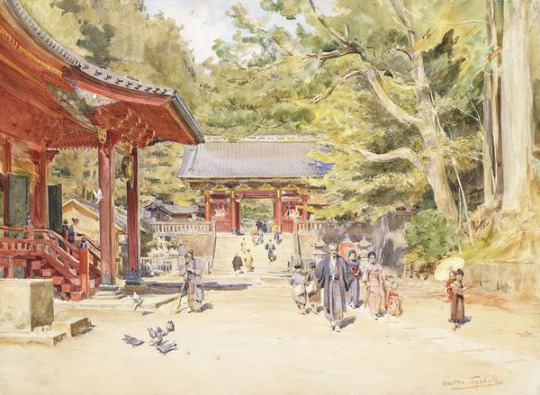
Tyndale, & Roofe, W. F. (1943). A Street Scene, Japan, (pencil and watercolour). In credoreference. https://search.credoreference.com/articles/Qm9va0FydGljbGU6MzIwMjgyOA==?q=A%20Street%20Scene,%20Japan,%20(pencil%20and%20watercolour)
specialist subject knowledge
Blur method
Mitcheson, K. (2010). Shibboleth Authentication Request. Login.ezproxy.aut.ac.nz. https://eds-s-ebscohost-com.ezproxy.aut.ac.nz/eds/detail/detail?vid=1&sid=fb224530-95d8-4618-acaf-5664e6270678%40redis&bdata=JnNpdGU9ZWRzLWxpdmU%3d#AN=64873788&db=vth
Colour reconstruction of underwater images
Hoth, J., & Kowalczyk, W. (2017). Colour reconstruction of underwater images. Underwater Technology, 34(2), 51–61. https://doi.org/10.3723/ut.34.051
“Stitch for Stitch, You Are Remembering”: Knitting and Crochet as Material Memorialization
Fisk, A. (2019). “Stitch for Stitch, You Are Remembering”: Knitting and Crochet as Material Memorialization. Material Religion, 15(5), 553–576. https://doi.org/10.1080/17432200.2019.1676621
Reflection in Water Drops.
Woodruff, T. W. (2010). Shibboleth Authentication Request. Login.ezproxy.aut.ac.nz. https://web-p-ebscohost-com.ezproxy.aut.ac.nz/ehost/detail/detail?vid=1&sid=dd396097-2c8d-4b09-b630-d01cfa7af9db%40redis&bdata=JnNpdGU9ZWhvc3QtbGl2ZSZzY29wZT1zaXRl#AN=48963475&db=vth
The Glass (collage, gouache & pencil on paper)
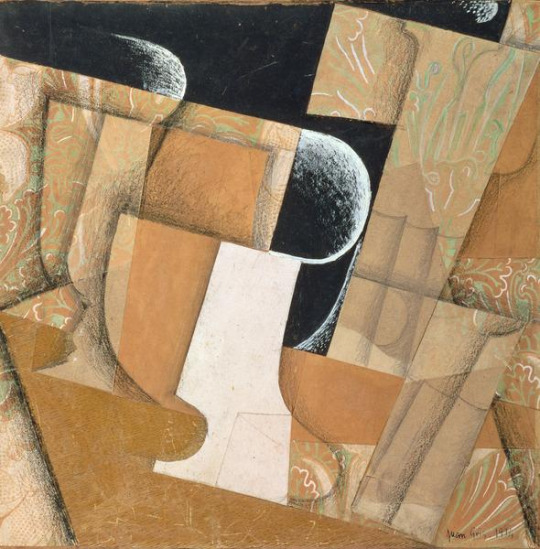
Gris, J. (1927). The Glass (collage, gouache & pencil on paper) . In credoreference. https://search.credoreference.com/articles/Qm9va0FydGljbGU6MzIwNzUyMQ==?q=The%20Glass%20(collage,%20gouache%20&%20pencil%20on%20paper)
Creatives working in the environmental, social, cultural, sub-cultural and political context
Climate Change Is A Myth! Shut Up! Just Shut Up!
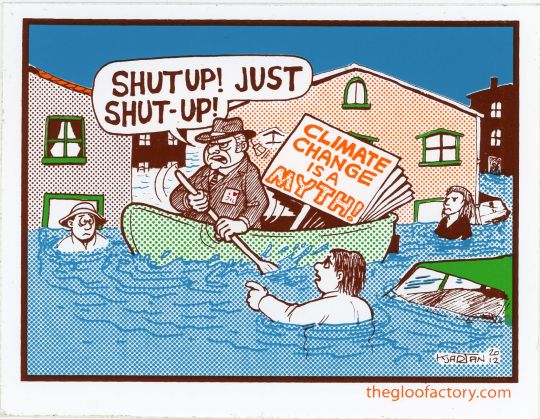
Kjartan Arnorsson (Karno). (2012). Climate Change Is A Myth! Shut Up! Just Shut Up!. [Sticker]. Retrieved from https://library-artstor-org.ezproxy.aut.ac.nz/asset/SS7730635_7730635_12095853
Ten Thousand Mandelas
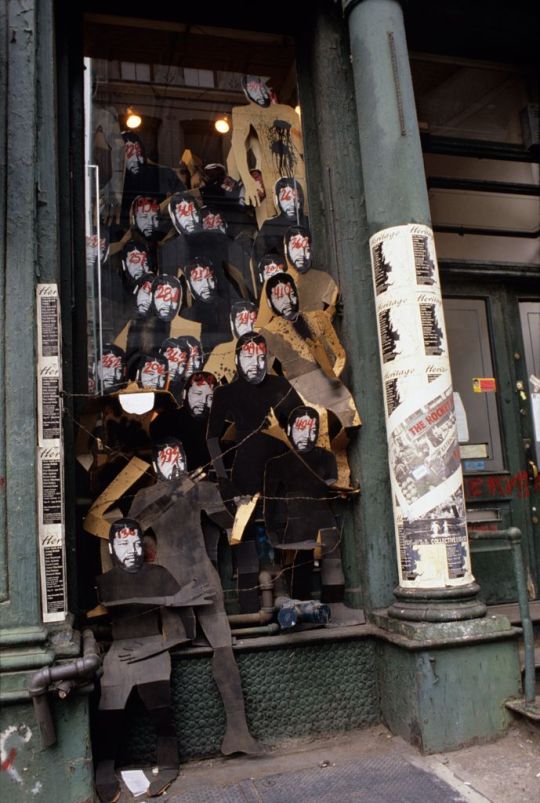
Willie Cole. (5/27/1988). Ten Thousand Mandelas. [Installation]. Retrieved from https://library-artstor-org.ezproxy.aut.ac.nz/asset/AFURNACEIG_10310797586
Exhibition: Kaleidoscope Quilts: The Art of Paula Nadelstern
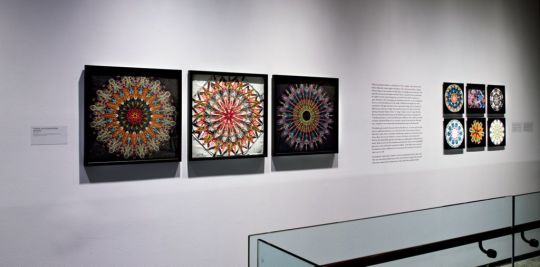
Stacy C. Hollander, curator. (April 21-September 13, 2009). Exhibition: Kaleidoscope Quilts: The Art of Paula Nadelstern, installation view. Retrieved from https://library-artstor-org.ezproxy.aut.ac.nz/asset/AAFOLKAIG_10313147179
Earth First!

(2013). Earth First!. [Sticker, Political sticker]. Retrieved from https://library-artstor-org.ezproxy.aut.ac.nz/asset/SS7730635_7730635_10950780
Time's Up -- Environmental Education & Direct Action NYC

(2013). Time's Up -- Environmental Education & Direct Action NYC. [Sticker, Political sticker]. Retrieved from https://library-artstor-org.ezproxy.aut.ac.nz/asset/SS7730635_7730635_10948647
1 note
·
View note
Text

On the other side Like a big clear screen road, moving in one direction I see in the other side. The small details spread, the people disconnect. From the known reality and accepted from a different perspective. And this is my view today. A look that allows me to see taking things from a different direction. Choose the filters through which I see. You are the people You are the loved ones You are life. And like through a screen fades and smears, the wheels of teeth. That until today they have driven my mind, receiving a different direction. Direction allows. Direction includes and understands. And I can see and understand everything today What I once understood differently. On the other side A semi transparent screen that is moving in one direction I can see the other side. Little details are not in focus and people being disoriented a bit and not in reality. A deferent view. And so is my view of life today. It’s a view that enables me to see things in a deferent mode. Choosing my own filters for life. Those that enable me to see people to see loved ones to see life. And like through a dissolving screen, the gear that moved my mind until today is shifting. A new gear that enables me to contain and to understand. And now, from this new view I can see that all I knew Is probably a small fraction of reality.
[עדו רוזנטל. צלם]
3 notes
·
View notes
Text
Migrant Workers are Flipping the Script and Using Photovoice to Tell Their Own Stories
Kukreja, R. (2022, May 8). Migrant workers are flipping the script and using Photovoice to tell their stories. The Conversation. https://theconversation.com/migrant-workers-are-flipping-the-script-and-using-photovoice-to-tell-their-own-stories-180500

Reena Kukreja writes: “What happens when undocumented Bangladeshi and Pakistani men in Greece pick up their cell phones to record their lives as migrant agricultural workers? ‘This will let the people learn how we live our lives here, said one of the men, referring to the photos and videos they were taking. For the workers, these serve as evidence of their migrant existence. COVID-19 and worries about food security have resulted in increased media coverage about migrant agricultural workers, with stories usually told on their behalf. Four sets of South Asian migrant men in Greece wanted to flip the script and tell their own stories. They used Photovoice, an arts-based social justice tool, to present themselves and their concerns directly to people. This eventually transformed into a travelling multi-media exhibition and a digital archive, This is Evidence.”
“Each year, thousands of young South Asian men arrive in Greece, Europe’s frontier, often driven by poverty, climate change, political unrest, or ethnic or religious violence in their home countries. ... Despite 90 per cent of Greek agriculture being dependent on migrant labour, they are paid low wages, face wage theft and are forced to work long hours without breaks.”
“The process behind the exhibition emerged organically as the men used WhatsApp to send me images of their lives. I suggested the use of Photovoice so they could share their lives with a wider audience. Photovoice is a participant-oriented visual research strategy used to collaborate with socio-economically and politically marginalized populations. Participants take images of what they consider important and not what researchers wish to highlight. ... These narratives are often used to advocate for policy changes. This project challenges the stereotypes of migrant men, often vilified because of their gender identity, race and religion. It also serves to empower by allowing the experiences of ‘disposable’ migrant agricultural workers in Greece to reach a wider audience through multi-city exhibitions and the digital archive.”
Additional Information
This is evidence: re-picturing south Asian migrant men in Greece. https://www.thisisevidence.com/
Kukreja, R. (2021). Visible yet invisible: the disciplinary mechanism of self-surveillance among undocumented South Asian male migrants in rural Greece. Journal of Ethnic and Migration Studies, 47(15), 3660–3676. https://doi.org/10.1080/1369183X.2019.1642740 UTL Link: https://doi-org.myaccess.library.utoronto.ca/10.1080/1369183X.2019.1642740
Heinrich Böll Foundation. (2017). Temporary migrant workers in Greek agriculture. Heinrich Böll Foundation. https://www.boell.de/sites/default/files/e-paper_temporary-migrant-workers-in-greek-agriculture.pdf
Sutton-Brown, C. A. (2014). Photovoice: A Methodological Guide. Photography & Culture, 7(2), 169–185. https://doi.org/10.2752/175145214X13999922103165 UTL Link: https://doi-org.myaccess.library.utoronto.ca/10.2752/175145214X13999922103165
Budig, K., et. al. (2018) Photovoice and empowerment: evaluating the transformative potential of a participatory action research project. BMC Public Health, vol. 18. https://bmcpublichealth.biomedcentral.com/articles/10.1186/s12889-018-5335-7 Open Access
Photo source: [Photograph]. This is Evidence. https://www.thisisevidence.com/where-we-work
#migrants#undocumented#agricultural labour#multi-media exhibition#migrant labour#Photovoice#flexible workers
4 notes
·
View notes




